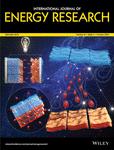A novel mathematical approach for the optical efficiency optimization of solar tower power plant technology
Summary
Solar tower power plant technology is based on the principle of concentrating incident solar irradiation on a receiving surface located at the top of the tower via a mirror field. The heliostat field consists of a significant number of reflective mirrors; each heliostat tracks the Sun individually and reflects the Sun's incident rays at a focal point. Therefore, the heliostat position plays a major role in the global system efficiency and must be carefully chosen to minimize optical losses. In this paper, a mathematical model was proposed for the analysis of the optical efficiency of the solar tower power plant. Detailed optical losses are mainly losses by blockage, shading, spillage, and atmospheric mitigation. During this study, the approach was oriented toward the optical study of the solar thermal power plant: a new method for calculating the blocked and shaded surface has been developed. This new method was then validated basing on the database of the marketed solar power plant PS10 installation with a north heliostat field configuration geometry, as well as a validation was elaborated based on a surrounding heliostat field configuration geometry. Obtained results show that the individual heliostat efficiency is in the range of 0.824; based on published papers, the calculation error factor is in the order of 0.01%. Numerical results of the shading and blocking efficiencies prove the reliability of the developed model. In the first hand, the model is valid whatever the heliostat parameter (its row, heliostat orientation, its position according to their neighbor, etc). On the other hand, the developed model is applicable in all heliostat field configurations; it is valid in both surrounding and north configurations.




